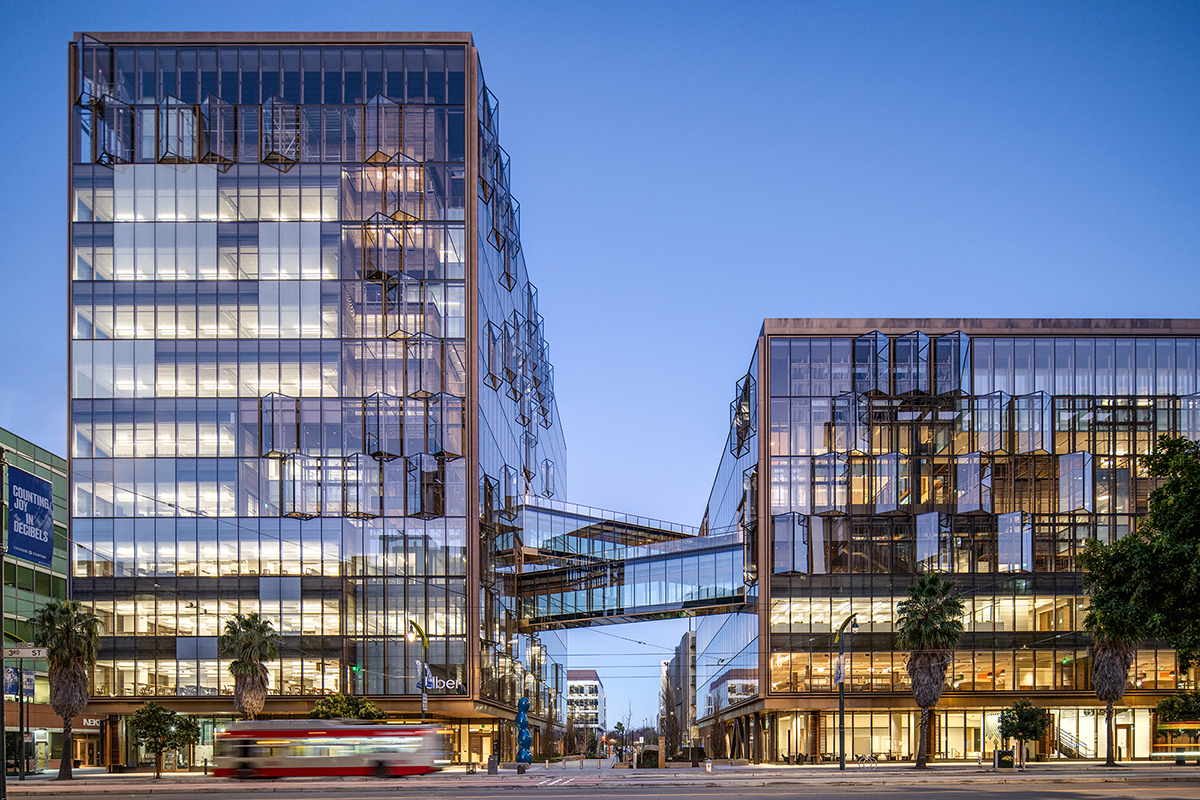
For Developers of Office Space: Win-Win Sustainable Strategies that Benefit Bottom Lines
In a world facing complex challenges, architects devise holistic solutions and implement fact-driven strategies to resolve client requirements, large and small. Our core values and expertise coupled with our commitment to client goals, lead us to integrated design approaches that address climate change and benefit a client’s bottom line.
Here are four beneficial outcomes:

ONE
Sustainability is a Wise Investment
These days, tenants are more educated and discerning. Given this, research indicates that investing in a healthy work environment can result in a beneficial ROI. As reported in a GRESB report “In JLL’s 2022 Future of Work Survey, 74% of organizations said they would be willing to pay a premium for leasing a building with leading sustainability or green credentials, and 22% said they already have”.
Creating new high-performing buildings – and upgrading existing ones – through selective material and system decisions, reflects both commitment and clear value to potential occupants both in terms of first cost but also operational costs. A building that reduces 80% of its targeted energy use, 40% of its targeted potable consumption and uses material with transparency documentation not only reduces operational expenses as utility costs soar, but also support a company’s brand or ESG commitment.
TWO
Value Add for Owners and Occupants
Healthy interiors equals happy occupants. After the pandemic and with increasing weather events, we know that designing healthy interior environments that can flex and open up to the outside is a value add.
The ability to open a window, go out onto a deck, turn on a desk lamp or a ceiling fan, increases comfort and reflects the importance of the user as an asset. According to the Healthy Building Team at Harvard T.H. Chan School of Public Health, years of research have shown that improved indoor environmental quality is associated with better health outcomes and cognitive function. Additionally, multiple studies have confirmed that these environments support choice, better productivity, and retention–a win for building owners, leases, employers, leasees, and the environment.


THREE
Resilience for the Future, Protecting Occupants During the Increasing Extreme Weather Events
With the increasing frequency of climate-related impacts such as wildfires, atmospheric river events, and brownouts, owners and tenants are ever more aware of the benefit of climate-resilient infrastructure and planning. Such simple upgrades or investments like double-glazed windows, insulated walls, and green roofs have “multiple direct benefits and co-benefits” for improving interior comfort, reducing external impacts and reducing operational costs according to a McKinsely and Co. report. Such future planning will only improve a building’s value over time.
FOUR
A Stronger Profile
Reports show that buildings that have been efficiently renovated have a stronger profile than their conventional counterparts. Even during the pandemic, when the market was low, the demand for green buildings was strong; the supply low. This market condition continues.
The adaptive reuse / deep energy retrofit of existing buildings, the reuse of building materials, and designing with locally manufactured materials, all reduce a project’s embodied carbon footprint, meeting California’s building code requirements while elevating the project’s brand through a creative low-embodied-carbon strategy. With the shift of the real estate market from only risk/return to assets that meet increasing company ESG ̶̶̶̶ targets and local requirements, architects can assist in embedding material and building system strategies ̶̶̶̶ stay with the project long after the doors open.

Looking for Additional Information + Strategies?
About AIA California
American Institute of Architects California (AIA California) is committed to harnessing the transformative power of architecture and design to address the greatest economic, environmental and social challenges of our time. We represent more than 11,000 architects and design professionals who join together to design a better world.
About the Images



